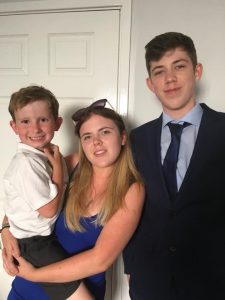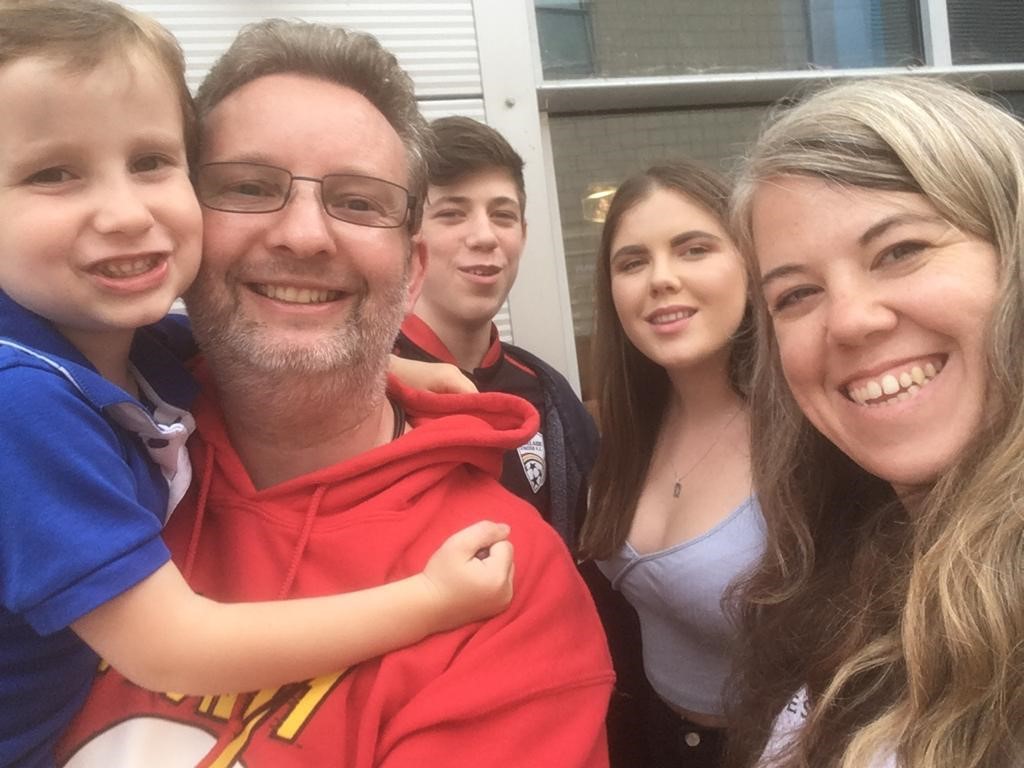By: Allease Vickery
I didn’t know CMT existed until I was diagnosed with it 11 years ago. As an adult, it was strange to learn I had a disease my family and I had never heard of, but it answered many questions about my childhood.
Growing up, kids at school would comment about my “weird feet.” I could never beat anyone at running no matter how much I tried or how hard I trained. I was the clumsiest person you ever met. It was frustrating. I didn’t know what was wrong with me.
Fast forward to the birth of my first child Victoria. When she was 3 years old, we noticed she had some developmental issues. Doctors originally thought she had cerebral palsy. After wearing leg braces day and night for the next four years, things seemed to improve. Then at age 10, Victoria started falling frequently and had excruciating hip pain. A new pediatrician referred us to a neurologist who diagnosed her with CMT. That’s how I learned I had CMT. Electronic and blood tests confirmed my daughter inherited her CMT from me.
When I first learned I had CMT, I was frightened. It’s the unknown that’s scary — not knowing how or when you will deteriorate physically. But more concerning is how it might progress in my three children — all who have CMT1A.
Three Reasons a Treatment Would Mean Everything
 Like my daughter Victoria who is now 21, my sons Andrew and Logan also have CMT. For Andrew who is 18, it affects him in his hands and legs. He wears insoles in his shoes to make walking more comfortable and must type on a laptop at school because his teachers can’t read his handwriting. Holding a pen is hard and he struggles to write long sentences. He also has scoliosis in his back and suffers from cramps, which affect his sleep most nights.
Like my daughter Victoria who is now 21, my sons Andrew and Logan also have CMT. For Andrew who is 18, it affects him in his hands and legs. He wears insoles in his shoes to make walking more comfortable and must type on a laptop at school because his teachers can’t read his handwriting. Holding a pen is hard and he struggles to write long sentences. He also has scoliosis in his back and suffers from cramps, which affect his sleep most nights.
Logan is 7, and his symptoms are less intense at the moment. His CMT affects his hand muscles as he struggles to write or cut up food. He’s learning to ride his bike with other kids but is finding it tough. He gets upset and frustrated when he can’t keep up with others.
Both of my boys simply want to be able to keep up with their friends and do the same activities their peers can — whether it’s writing in class or wanting to “run faster without falling over” like Logan.
For me, a treatment wouldn’t just mean freedom from the daily pain I experience. It would mean I wouldn’t have to worry about my kids’ future or how their health may deteriorate. Investing in CMT research is so important because a cure would be the best gift you could give people suffering with CMT. A better future for my three children would mean everything.

Research to Find Treatments for CMT1A
The CMT Research Foundation is currently funding three CMT1A research projects aimed at developing treatments for people like Allease and her kids. Using an innovative and unconventional approach, we’re identifying opportunities to partner with premier researchers to think differently about speeding drug development to patients. Read more about the latest projects and progress in CMT1A:
- Optimizing RNA-based therapeutics as gene therapy for CMT1A
- A genetic therapy approach to CMT1A
- A novel series of ASOs to address CMT1A
While no treatments or cures currently exist for CMT, the science to change that does. Your donation to the CMT Research Foundation will fund cutting-edge research that’s solely focused on drug development, so no one has to fear what the future may hold because of CMT. Together, we can change the course of CMT during our lifetime — and for every future generation. Donate now.
READ NEXT: A Brotherly Bond That Must Be Broken
READ NEXT: No One Should Have to Choose Between CMT and Motherhood: Leanne’s Story
